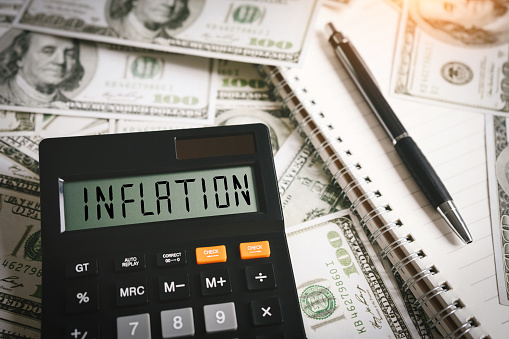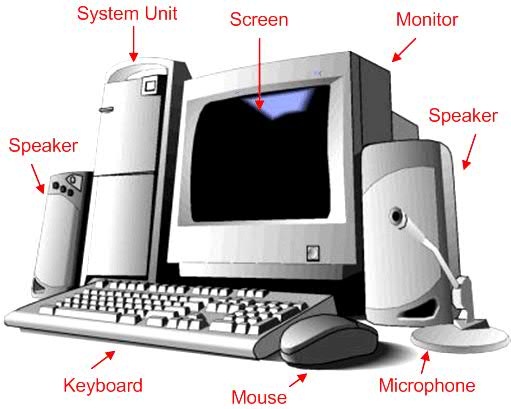Inflation is caused by the rising price of goods and services. The prices are driven by the amount of debt and expectations of repayment. Debt is created as a result of produced goods and gathered resources. These goods and services can be traded between countries or exchanged as legal tender, but inflation is a result of debt and expectations of repayment, which can be in the form of expected services or repossession of liens.
Measurement of inflation
The simplest and most commonly quoted indicator of inflation in the United States is the Consumer Price Index (CPI). This measure is based on changes in the average prices consumers pay for goods and services in a given year. It is calculated using data from the Bureau of Labor Statistics and is designed to reflect changes in the general price level of goods and services in a given economy.
While the CPI is the most popular measure, the PCE (personal consumption expenditure) index is an alternative measure of inflation. It is more comprehensive and includes more items. It is also constructed according to standard price index theory. It also has less pronounced bias in recent years. As such, the PCE has been a more accurate indicator of inflation.
The CPI index, on the other hand, captures the experience of the average urban household, which isn’t representative of the entire population. Most people experience higher inflation rates than those reflected in these published indexes. The CPI combines price changes for a wide variety of goods and services, and weights each item in the basket in proportion to its importance in a “typical” household. The weights for each item are adjusted periodically in order to estimate the CPI.
While the headline CPI is considered a reliable indicator of inflation, it is important to note that there is some sensitivity to a number of factors that can affect the rate of inflation. For example, energy and food prices can fluctuate significantly depending on geopolitical events and special factors. Therefore, analysts prefer to look at the CPI’s core inflation, which measures inflation for all items and gives a more complete picture of the underlying trend.
However, the CPI does not measure the elasticity of the economy over the long run. It is difficult to compare inflation data from earlier periods because of changes in data collection procedures. For instance, the CPI data from the 1970s and 1990s are different. These differences can make it difficult to compare the figures and trends of the CPI over the long run.
Effects of inflation on borrowers
Inflation erodes the purchasing power of money, making it more expensive to purchase goods and services. Demand deposits, which pay negligible interest, can also lose their purchasing power if the rate of inflation is very high. For example, an average U.S. checking account pays only 0.03% interest annually. If inflation is high, a household may substitute foreign currency for domestic currency or invest in more volatile assets. This flight from money is usually only a temporary phenomenon.
Rising inflation will also negatively impact the value of bonds. It will reduce the value of bond investments and decrease their yield. Inflation also lowers the rate of return for stock investments. This can be problematic for borrowers who are trying to purchase a house. Mortgage rates are directly affected by inflation, but it can also affect them indirectly.
Despite these concerns, some borrowers benefit from periods of inflation. For example, some borrowers can benefit from a higher take-home pay, which is a net benefit of inflation. During periods of labor shortages, lawmakers may increase minimum wage requirements and companies may increase salaries, which increases inflation.
Inflation is a natural process that occurs in a society. While the Federal Reserve can control inflation through its various interest rate policies, rising inflation can result in higher interest rates. This can affect the interest rates for both new and existing loans. The higher the rate of inflation, the more difficult it will be for borrowers to make a good investment.
The impact of inflation is most apparent to the average consumer. The Consumer Price Index (CPI) measures the changes in the prices of consumer goods and services. When consumer prices increase, many people begin spending their savings or relying more on credit. As a result, credit card balances and applications for credit are increased.
Inflation has an important role in the economy. If a country’s real interest rate is low, it can lead to higher inflation, which will shift wealth from savers to borrowers. It can also lead to higher unemployment and less economic growth.
Effects of inflation on producers
Inflation can affect the profits of consumers and producers. Consumers, for example, face higher costs if they want to purchase a new home. Producers suffer from lower profits as a result. Inflation can also negatively affect the economy in general. A higher rate of inflation can lead to wage stagnation and real income eroding.
Depending on the situation, businesses may shift production to higher-margin products and services. However, before implementing a production shift, business leaders should understand and analyze the impacts of this move. They should consider increasing prices to keep up with rising costs. Companies should also take proactive steps to improve their competitive market position.
As prices rise, consumers become uncomfortable with them. They may start spending and investing more money to offset their discomfort. This spending trend will drive prices higher. However, because markets may not catch up with the demand, prices can go up unevenly in different parts of the economy. For example, the housing market is still facing high prices.
A large increase in money supply may also increase the demand for goods and services. This will boost prices and increase production costs. Such inflationary periods are known as cost-push, and they impact every company in the economy. Distribution companies are particularly vulnerable to this type of inflation because of their nature of operations. Consumers’ purchasing power decreases, and consequently, their profits fall. Furthermore, increased costs of inventory can reduce their gross profits.
Inflationary periods tend to be long-lasting. It happens when the money supply in an economy becomes excessively large, which reduces the unit value of the currency. The money supply becomes larger than the economy’s demand and, as a result, the purchasing power decreases. This is known as the quantity theory of money, and it is one of the oldest economic hypotheses.
Inflationary periods also increase costs faster than prices. This affects manufacturers in all industries, but will affect those with tight margins the most. Inflation will reduce their margins and force them to cut costs.
Monetary policy during inflation
Several factors affect the effectiveness of monetary policy in controlling inflation. These factors include the availability of credit and interest rates. These factors are also known as money market conditions and are influenced by the monetary authority. These factors affect aggregate demand and the economy in various ways. The effect of monetary policy on these variables is either expansionary or contractionary.
Monetary policy is set by the monetary authority to maintain a balance between aggregate money demand and the total productive capacity of an economy. The central bank must monitor and control the money supply in an economy to prevent inflation. When the total amount of money in circulation is greater than the amount of goods and services produced, a restricted money policy is needed to maintain a stable price level. When this occurs, prices will rise, and employment will fall.
During periods of inflation, the value of a currency increases or decreases rapidly. This is a self-correcting mechanism that occurs because prices will increase as resources become scarcer. This forces producers to use fewer resources and thereby reduce output. Monetary policy during inflation can be implemented in two ways.
The first option involves increasing the quantity of money. Increasing investment will increase the level of employment. In the second option, lowering the interest rate will raise investment and increase saving. Once this is achieved, saving and investment should be equal. This can be achieved by increasing investment demand. In addition, monetary policy must be aimed at lowering the interest rate to maintain full employment.
Monetary policy during inflation can be a key part of the economy’s recovery. The government can use monetary policy to increase the amount of money on hand while simultaneously lowering the interest rate. Increasing the amount of money available can increase employment and increase GDP. However, increasing the amount of money in circulation can increase the amount of debt in a country.
In Nigeria, monetary policy is subject to military control. It is crucial to understand how this policy affects inflation. Despite the fact that monetary policy can help stabilize economic growth, it is insufficient to control inflation. The government can supplement monetary policy with non-monetary measures.



